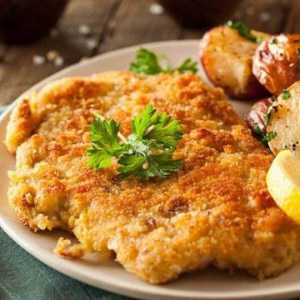France loaded us up with all kinds of great recipes and ideas for dishes we already knew about – and some that were brand new. And we learned that France owed a lot to Italy in the evolution of its cuisine. Today, we’ll offer a study in contrasts: A survey of Germany’s most beloved dishes!
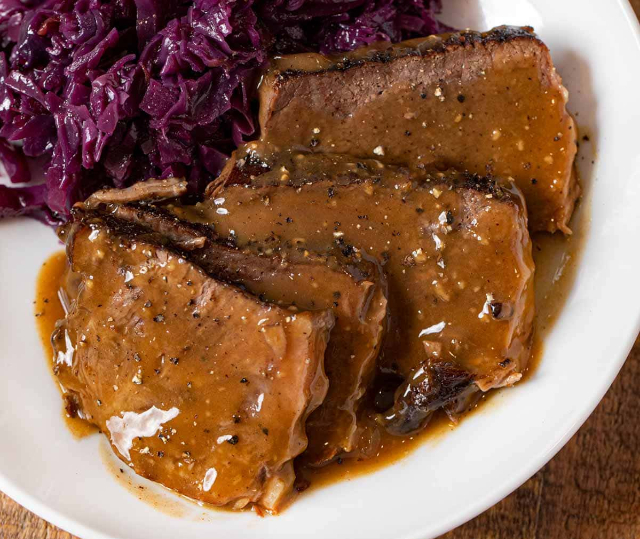 Sauerbraten: Germany’s answer to Pot Roast – One of the country’s official national dishes!
Sauerbraten: Germany’s answer to Pot Roast – One of the country’s official national dishes!
Germany has been a cultural constant in central Europe for a thousand years. Its influence once stretched from what is now northern Germany and the Slavic states as far south and east as Iran. The only reason the Germans never conquered France is that Julius Caesar had already subjugated it. Germany later joined other European nations making colonization efforts in Africa and Asia. Curiously, German culinary traditions were never incorporated in the national cookbooks of far flung lands the country occupied. And the exotic cuisines of those cultures were never exported back to Germany.
Our Expedition to Germany is definitely not recommended for vegetarians, much less vegans. About all the German dining tradition has to offer in that vein is potatoes, cabbage and onions. But, if you love hearty, big meat flavours, Germany may be the ultimate place for you!
On our menu today
Sauerbraten: This is the German answer to Pot Roast, but it’s traditional to use horse meat or venison in place of beef if you want to (see photo, above). But with a distinctive German tang. That’s because it’s marinated (sometimes for days) in a mixture of vinegar and wine. It comes out super tender and flavourful. Serve with potato dumplings or boiled potatoes, and boiled or fried red cabbage. It’s one of Germany’s official national dishes!
Rinderroulade: Or, Beef Rouladen. Thin slices of lean beef are rolled around fillings such as bacon, onions and pickles, and braised in red wine. The braising liquid makes a fabulous, flavourful gravy, which is considered an indispensable part of the dish.
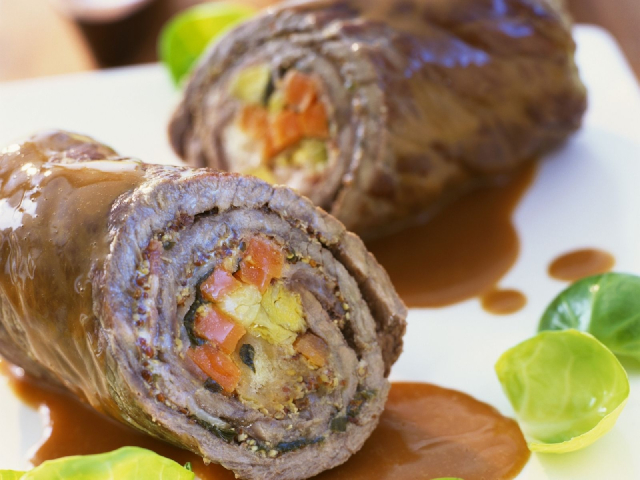
Serve with boiled or mashed potatoes and marinated red cabbage. Mere words can only go part way to describing the wonderfulness of this main!
Schnitzel: A Schnitzel is simply a breaded cutlet. You can use pork or veal – or chicken, for that matter (see photo, top of page). Wiener Schnitzel is perhaps the most well-known of the breed and, though named after an Austrian city (Vienna), it’s a fravourite all over Germany. Serve with boiled or roasted potatoes.
Sweinshaxe: A pork knuckle or pork hock marinated (again, often for several days) and roasted low and slow for three hours or more – until the meat is falling-off-the-bone tender and the skin is crispy.
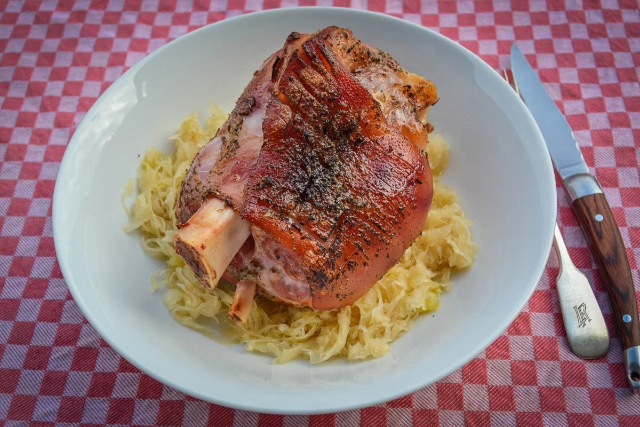
Serve with your choice of potatoes and your preference of cabbage style.
Hasenpfeffer: I guess we’ve all heard of this famous German Rabbit Stew. Rabbit parts are marinated (for hours, or overnight) in wine and vinegar, and braised in wine and onions (traditionally thickened with the rabbit’s blood) until the stew is thick and meaty, and the rabbit is falling-off-the-bone tender. (Beginning to see a pattern in German cooking, here?) Herbs and spices include rosemary, thyme, juniper berries, bay leaves and cloves. Today, folks generally leave out the blood – largely because we get our rabbits pre-dressed at the supermarket. Anyway, without the blood, you can thicken the sauce with a simple roux or a flour slurry. Those in the know, recommend you serve Hasenpfeffer with Spätzle noodles (see below).
Wurst: That’s German for ‘Sausage’. We’ve all heard of Bratwurst (pork and veal, grilled)(see photo, below), Knockwurst (pork and beef, boiled), Weisswurst (bacon sausage), and Currywurst (pork with Ketchup-Curry Powder sauce, grilled).
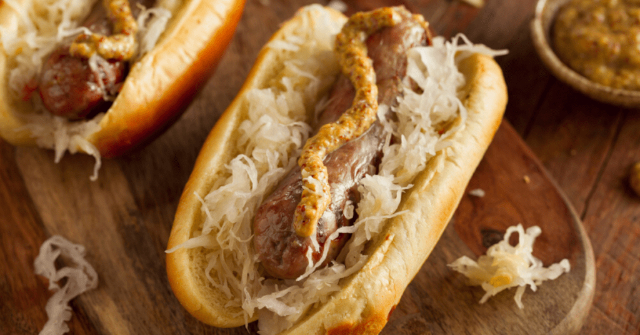
They actually make more than 1,500 varieties of Sausage in Germany – each associated with a certain region and tradition. Those spotlighted above are the top faves; the ones that have made it out of the country to be enjoyed around the world.
The newest, and currently the most popular sausage in Germany, is Currywurst. It’s reported to have been invented in Berlin in 1949, when folks started to copy occupying British soldiers who used Ketchup and Curry on grilled sausages. Serve with Fries, on an oversized Sausage bun. Finally, a foreign culinary influence made it into Germany!
Sides
Kartofflepuffer: Potato Pancakes, similar to Latkes. Or just what you’ll want, if you prefer your Waffle House Hash Browns ‘smothered and covered’ rather than ‘scattered on the grill’. They’re similarly simple to make: mashed or grated potatoes are mixed with eggs, onions and parsley. Pan fry or deep fry them, and serve beside eggs for breakfast. Or, dish them up with sour cream and apple sauce for desert.
Kartoffelkloesse: Potato Dumplings. These are round and golden, and go with just about any German main dish. Yellow Potatoes are boiled, mashed and formed into 2 in. / 5 cm balls.
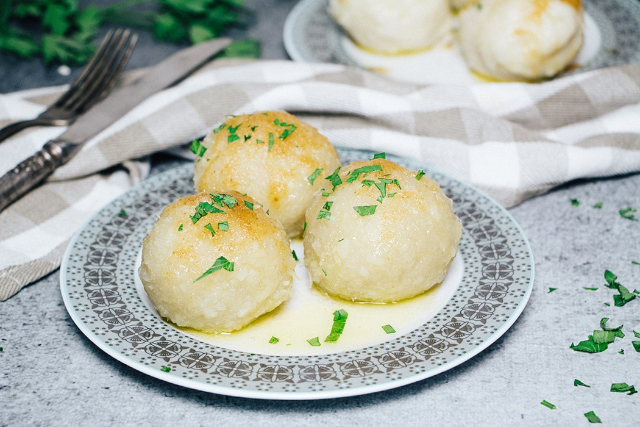
The balls are boiled in salted water. You really need to use the salt, and you really need to salt the water well, or the dumplings won’t have any flavour. Kartoffelkloesse are usually served with main dishes that have lots of hearty gravy for them so soak up (more flavour!). Some vegetarians include them in their diets.
Spätzle: These are Germany’s version of egg noodles. The dough is made with flour, eggs and salt, and some fizzy water to help puff the noodles when they’re boiling. Traditionally, the dough is ro9lled out thin on a cutting board and scraped off in narrow strips which are dropped carefully into the water so as not to stick to each other. In cyulinary schoiol, we were encouraged to try different ways to form the long, round noddles. Some of us tried pressing the dough through a large-holed sieve. Othgers tried pressing it through a potatao ricer. The result? we all ended up agreeing that practice with whatever tool we might choose was more important that the tool itself..
Brezlen: Pretzels. Not the dinky little, hard, over-salted cocktail snacks we may be used to, but large, bready, masterpieces, slightly crispy on the outside, and soft and chewy on the inside.
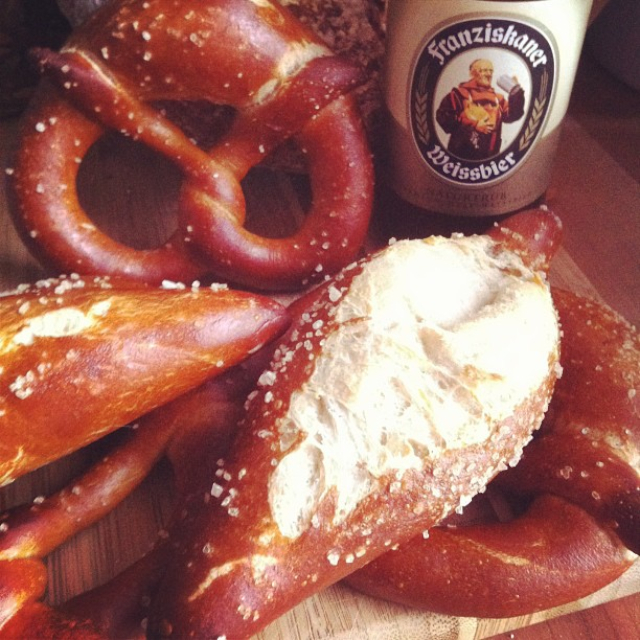
Think: New York Pretzels, hot and yummy, right off the street cart. In Germany, they make up the dough into all sorts of shapes – even loaves – and top them with salt or sesame seeds. Whatever shape you choose, make sure to dip them into some good German Mustard!
Sauerkraut: Sauer = sour, kraut = cabbage. Green or red cabbage is sliced thin and fermented in lactic acid bacteria. It’s a good ‘keeper’, like many fermented foods, and is eaten all over the country. Serve beside any meat dish. Note: Sauerkraut is techynically vegetarian/vegan – one of only a very few such dishes in the German national cookbook.
Butterkäse: ‘Butter Cheese’; also known as Damenkäse, or ‘Ladies’ Cheese. It’s a creamy smooth, buttery-tasting cheese featuring over 50 percent butterfat. It’s often used in dishes that involve melting it. Use it to top casseroles, in Grilled Cheese Sandwiches, on cheese or charcuterie boards… Its great flavour and almost complete lack of aroma make it a natural go-with in lots of applications!
So what are you waiting for?
If you want to serve any of the marinated dishes above this coming weekend, get Googling detailed recipes now, and clear some space on a middle or lower shelf of your fridge. Whatever your heritage-of-origin, you’ll love German food! Tomorrow, we’ll delve into German desserts and beverages…
~ Maggie J.

